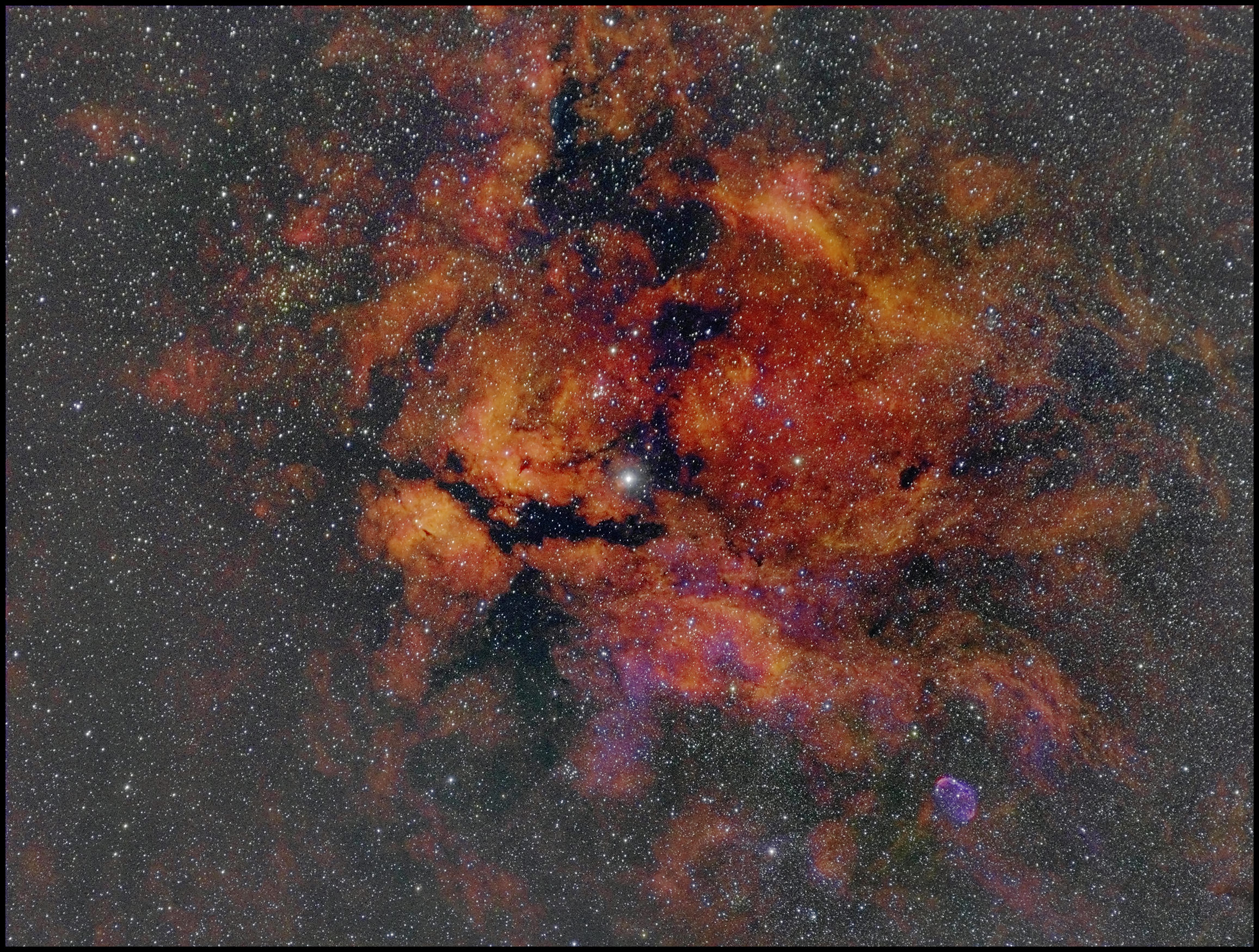Here's the home of 2021's 'Image of the Month' pictures. Enjoy!
2021 : 2020 : 2019 : 2018 : 2017 : 2016 : 2015
Image of the Month for October 2021: The Threadgate Star Party.
Something a bit different this month, a selection of my images from a very special star party organised by a bunch of astro rebels - You know who you are folks! 😎
The Elephant's Trunk Nebula:

Sunspots:
Heart Nebula:

Bubble Nebula and Friends:

Triangulum Galaxy, M33:
Nightscape (single exposure with Samsung Galaxy A51):
The Milky Way (Single exposure with Samsung Galaxy A51):
Image of the Month for September 2021: Saturn and its four largest moons.


Image of the Month for August 2021: Eagle Nebula, M16 with the Pillars of Creation

Image of the Month for July 2021: The Sadr Region Nebula

Image of the Month for June 2021: The Hercules Galaxy Cluster
Image of the Month for May 2021: The Tadpoles Nebula
Image of the Month for April 2021: The Cosmic Jellyfish, IC433

The Jellyfish Nebula, IC433 is a supernova remnant in the constellation of
Scientists think that the star which created the nebula is a rapidly spinning neutron star or pulsar numbered CXOU J061705.3+222127, or J0617 for short, which is a powerful x-ray source.
I stacked the image with Deep Sky Stacker then assigned the Sii,Ha,Oiii data (from ionised sulphur, hydrogen and oxygen)to RGB in that order, which gives the 'Hubble palette'. I used Photoshop CS2 to stretch details and adjust the colour palette (this is usually done so that the strong Ha signal appears yellow, rather than bright green).and then used Astra Image for fine-tuning and some gentle contrast enhancement.The oxygen rich areas are visible as a slight violet halo around the outer parts of the nebula.
Image of the Month for March 2021: Monkey Business

The Monkey Head Nebula, NGC2174 is a beautiful target with lots of fine details, especially around the edges.
The image was rotated and cropped to create a composition with some space for the 'monkey' to gaze into, perhaps remembering Ham the chimpanzee and the other primates that paved the way for humans into space.
I stacked the image with Deep Sky Stacker then assigned the HaSiiOiii data to RGB in that order, which gives more attractive colours and more natural stars than the 'Hubble palette'. I used Photoshop CS2 to stretch details and adjust the colour palette and then used Astra Image for fine-tuning and some gentle contrast enhancement.
Image of the Month for February 2021: The Flaming Star Nebula

The Flaming Star nebula, also known as IC 405 surrounds the star AE Aurigae. Most of its colour comes from emission of Hydrogen and Sulphur light, highlighted in this narrowband image. The image has been updated to include the blue reflection component imaged in broadband blue light.
See past month's images
Image of the Month for January 2021: The Horsehead and Flame Nebulas

The Horsehead Nebula or Barnard 33 is a small dark nebula, whose fame arises from two things - fortuitously lying in front of a 'curtain' of ionised hydrogen gas and a remarkable resemblance to a horse's head. This image also shows the bright double star Alnitak (note the smaller companion star just left of the main star), and the bright Flame nebula (NGC 2024 or Sh2-277). Again the Flame nebula is the result of bright hydrogen behind a dark dust cloud. Smaller areas of blue reflection nebula where the dusty nebulas scatter starlight are also visible in the image. This image is a composite of three monochrome images filtered for the light of hydrogen alpha, sulphur ii and oxygen iii mapped in that order as red, green blue and then colour balanced.
Compare this image to the images for the month for December 2019, taken using a tri-band filter and colour camera or that for January 2016, taken with a colour camera and no filter.








